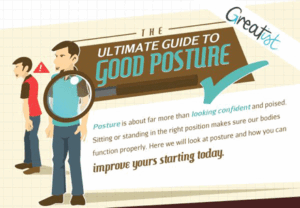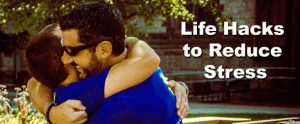Raising our “Cups” to Olympians
If you have been watching the Olympics, I’m sure that you’ve seen and/or heard about “those strange purple marks” on Michael Phelps and some other Olympians. Those marks are not hickies. Those are marks from a technique known as “Cupping.” Cupping is a form of holistic medicine that has been around for centuries. It has been claimed to help improve circulation and reduce pain. As horrible as the marks may look, they are not actually painful like a bruise. The bruising that occurs is due to capillaries breaking just beneath the surface of the skin, however, unlike the compressive trauma that is preceded by a bruise, cupping bruises do not typically hurt. As a matter of fact, unless you see them, you will forget they are even present. In other words, what you are seeing LOOKS much worse than how it FEELS. However, when you take something as strange and odd like cupping and plaster it across the airways to millions who only see and can’t feel what it is, the natural reaction is horror and disbelief that someone would allow someone else to actually do this to them. Well, don’t knock it until you try it. In this case, not seeing, but feeling is believing.
In 2008, the world was confused about “that strange magic tape” when Kerry Walsh was wearing it. This Olympics, the “performance enhancer” is cupping. The skeptics will be quick to point out, as they were about kinesiology tape, that there is absolutely no science to back its validity and any effects it may have are placebo at best. I love this about western medicine followers. They are always quick to debunk anything that is not backed by science, yet when newer science debunks the old science we hear nothing of it. So while athletes are getting the relief they need (or winning 23 gold medals), the media cries “quackery”.
Based upon the logic of the skeptics, we should still be icing injuries and injecting cortisone into painful joints (both of which have been shown to retard the healing process as well as damage connective tissue repair1,2). Ultimately, if the athlete/patient is getting results from the therapy, it’s working (for them). This is not a blanket statement for any approach or particular injury (at first, do no harm). If my 8 year old says she need a band aid for her finger because it hurts, I’ll give it to her knowing full well that the band aid won’t “scientifically” do anything, but yet it will make her feel better. Case closed.
1 Khan KM, Cook JL, Taunton JE, Bonar F. Overuse tendinosis, not tendinitis, part 1: a new paradigm for a difficult clinical problem (part 1). Phys Sportsmed. 2000;28(5):38–48. PubMed #20086639.
2 Collins NC. Is ice right? Does cryotherapy improve outcome for acute soft tissue injury? Emerg Med J. 2008 Feb;25(2):65–8. PubMed #18212134.
Ready to #feelbetter?
You're just a click away from a wicked good massage!
-

60 Minute Massage Gift Card
$170.00 Add to cart -

90 Minute Massage Gift Card
$255.00 Add to cart -

Mini Aer Small Room Air Purifier
$149.00 Add to cart -
Sale!

Thera-Pearl Sports Pack/Hot Cold
Original price was: $14.99.$12.99Current price is: $12.99. Add to cart -

3 Somadome Sessions Gift Card
$135.00 Add to cart -

TheraBand CLX Connective Loop
$14.99 Select options -

6 Somadome Sessions Gift Card
$270.00 Add to cart -
Sale!

Biofreeze
Original price was: $14.99.$12.99Current price is: $12.99. Add to cart
Passion Mountain
I was at an event recently and was asked by somebody how I could STILL be so passionate for what I do. He said, “What I mean is that you talk about what you do with the passion of child flipping through a new pack of baseball cards. I wish I was that passionate about…
Read MoreFish You Should Scale Back On
New Englander’s love their seafood and we deepen our love affair every summer when our favorite crustaceans, ‘lobstah’ is a plentiful. But what is the best seafood for us and what are the ones that we should be staying away from regardless of how yummy they may be? Monterey Bay Aquarium has combined data from…
Read MoreSports are a Great Metaphor
It’s no secret that my life has always revolved around athletics. From my early days playing pop warner football, through my college years of lacrosse and on into the various community leagues since, being part of a team has always been where I feel most comfortable. What I enjoy most about being part of a…
Read MoreWhat is an Expert?
“An expert is someone widely recognized as a reliable source of technique or skill whose faculty for judging or deciding rightly, justly, or wisely is accorded authority and status by their peers or the public in a specific well-distinguished domain.” – Wikipedia This past month I flew to Atlanta to present a few classes in…
Read MoreThe Power of a Hug
Originally Posted 5/1/2014; following the 1 year anniversary of the Boston Marathon Bombings and our mission to rebound after these horrible attacks on our city. We helped orchestrate the ‘One Run for Boston’; a 3328.2 NON-STOP running relay from LA to Boston, raising over $500K for the victims and survivors of the events of 4/20/2013.…
Read MoreTips from the Table
Without fail, every marathon season, I am asked by my patients, what kind of advice I would offer up to them as they prepare to run the Boston marathon. I first admit that I have never (nor will ever) run a marathon, but given my unique insight of spending 1000’s of hours alone in a…
Read MoreShoulder Impingement
The glenohumeral joint is a highly complex articulation. It has the greatest range of motion of any joint in the body. However, its increased motion occurs at the expense of stability, requiring the soft tissues to play a more critical role in maintaining joint integrity. As a result of increased mechanical demands, numerous soft-tissue injuries…
Read MoreTrain, train, train. Train of fools.
In my seventeen years as a massage therapist, I am still amazed by some of the things I see in my office. Being situated 1/10th of a mile from the finish line of one of the most prestigious marathons in the world, the Boston Marathon, we see more than our fair share of runners coming…
Read MoreAchilles Tendon Disorder
Achilles Tendon Disorder Massage therapists see many clients with active lifestyles. Running, jumping, dancing, climbing, or any number of other activities can put serious stress on the Achilles tendon (AT). AT disorders also can contribute to biomechanical disorders in the foot and lower extremity. That is why it is important for the massage practitioner to…
Read More


